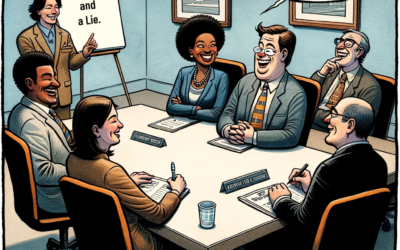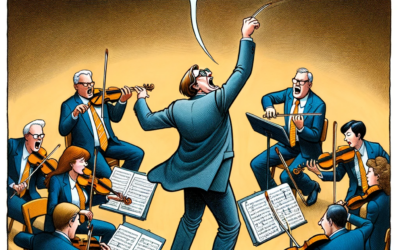Why do some teams consistently outperform, while others—equally smart, equally resourced—limp along in dysfunction? So, what are the conditions for team effectiveness?
That question has haunted leaders for decades, and too often, the answers we reach for are shallow: “We just need better people,” or “Let’s find someone with more charisma to lead.” But J. Richard Hackman, the late Harvard psychologist and organizational sage, asked a far more generative question: What conditions reliably produce teams that perform brilliantly and effectively?
Hackman didn’t just speculate. He researched—meticulously, over forty years—with field studies across high-stakes environments like NASA, the U.S. intelligence community, hospital trauma teams, and performing arts ensembles. His insights didn’t come from a whiteboard; they came from watching real teams wrestle with real challenges.
And what he found changed the way we coach, design, and lead teams today.
From Charisma to Conditions: Why Hackman’s Work Matters for Teams
In a business culture that often idolizes heroic solo leaders, Hackman reframed the lens. He reminded us: Great teams are not the product of individual genius—they are the product of deliberate design.
Three powerful shifts define his legacy:
- From personality to setup. Instead of pathologizing people (“Why can’t they just work together?”), Hackman urged leaders to examine how the work itself is structured. Is the team real? Is the goal compelling? Are roles clear? These questions trump personality diagnostics every time.
- From intuition to evidence. His work replaced guesswork with rigor. Through empirical study—not anecdote—he surfaced the actual drivers of team effectiveness, cutting through the fog of feel-good theories.
- From cheerleading to architecture. Hackman showed that motivation isn’t something you pump into people. It’s something you build into the system. Like oxygen in a room, the right conditions make high performance inevitable.
The Five Conditions of Great Teams
At the core of Hackman’s model are five “enabling conditions”—think of them as the architectural pillars of team excellence. If even one is missing, the structure falters. But when all five are present? The results speak for themselves.
- A Real Team: Not just a group. A real team has defined boundaries, stable membership, and true interdependence. If you can’t say who’s on the team—or if the roster shifts weekly—you don’t have a team. You have a crowd.
- A Compelling Direction: The goal must matter. It must challenge. It must be crystal-clear. Ambiguity kills momentum; a purpose that feels consequential fuels it.
- An Enabling Structure: The right roles, the right norms, the right skill mix. Conflict isn’t the enemy—unstructured conflict is. When rules of engagement are set early, teams fight smarter and waste less.
- A Supportive Context: Teams thrive when they have the resources, data, and reinforcement systems that align with collective performance. If individuals get rewarded while the team fails, dysfunction is baked in.
- Expert Coaching: Not motivational fluff, but timely guidance—especially at inflection points. Think of a director stepping in during rehearsal, not opening night. Coaching, in Hackman’s world, is about process, not just pep.
Putting Hackman’s Conditions to Work: The Leader as Architect
So how do we apply this? Not with slogans or new tech, but with thoughtful discipline. Consider these as leadership design practices:
- Start with structure. Before the kickoff meeting, define who’s in, what they’re chasing, and why it matters. Make the direction non-negotiable and non-blurry.
- Get explicit about norms. Who decides? Who challenges? Who calls timeouts? Make these roles known before the first storm hits.
- Equip and align. Don’t just launch teams and hope. Feed them the tools, access, and rewards that drive joint success—not lone-wolf heroics.
- Coach at turning points. Resist the urge to intervene emotionally when morale dips. Instead, show up strategically when the team’s workflow needs evolution.
- Step back—but wisely. Hackman believed in what I call “designed autonomy.” Set the stage with care, then let the ensemble play their scene.
The Payoff: From Chaos to Collective Genius
Hackman-designed teams deliver on multiple fronts. These teams don’t just check boxes—they deepen trust, work through conflict with clarity, and grow into resilient, adaptable units that stick around for the long haul. Not because of team-building retreats, but because the conditions of excellence are built into their daily reality.
If you’re leading a mission-critical initiative, here’s your challenge: Don’t just inspire your team—engineer their success. Use Hackman’s five conditions like a blueprint. When performance is designed into the system, leadership shifts from heroic to sustainable.
And that’s where the real magic happens.
What if your next high-stakes team didn’t need a hero—but just a better foundation?
That’s the question Hackman leaves us with. And the answer, in many cases, might be the difference between burnout and brilliance.



